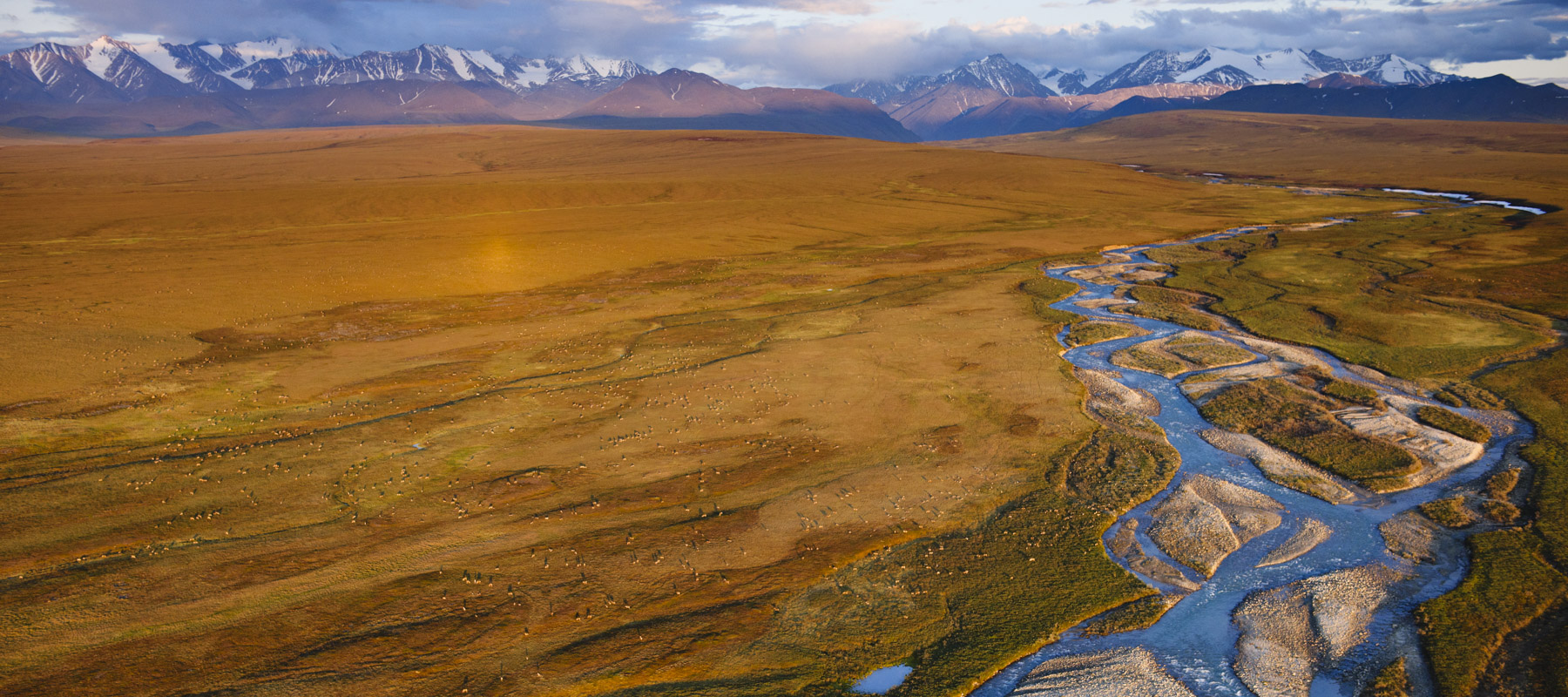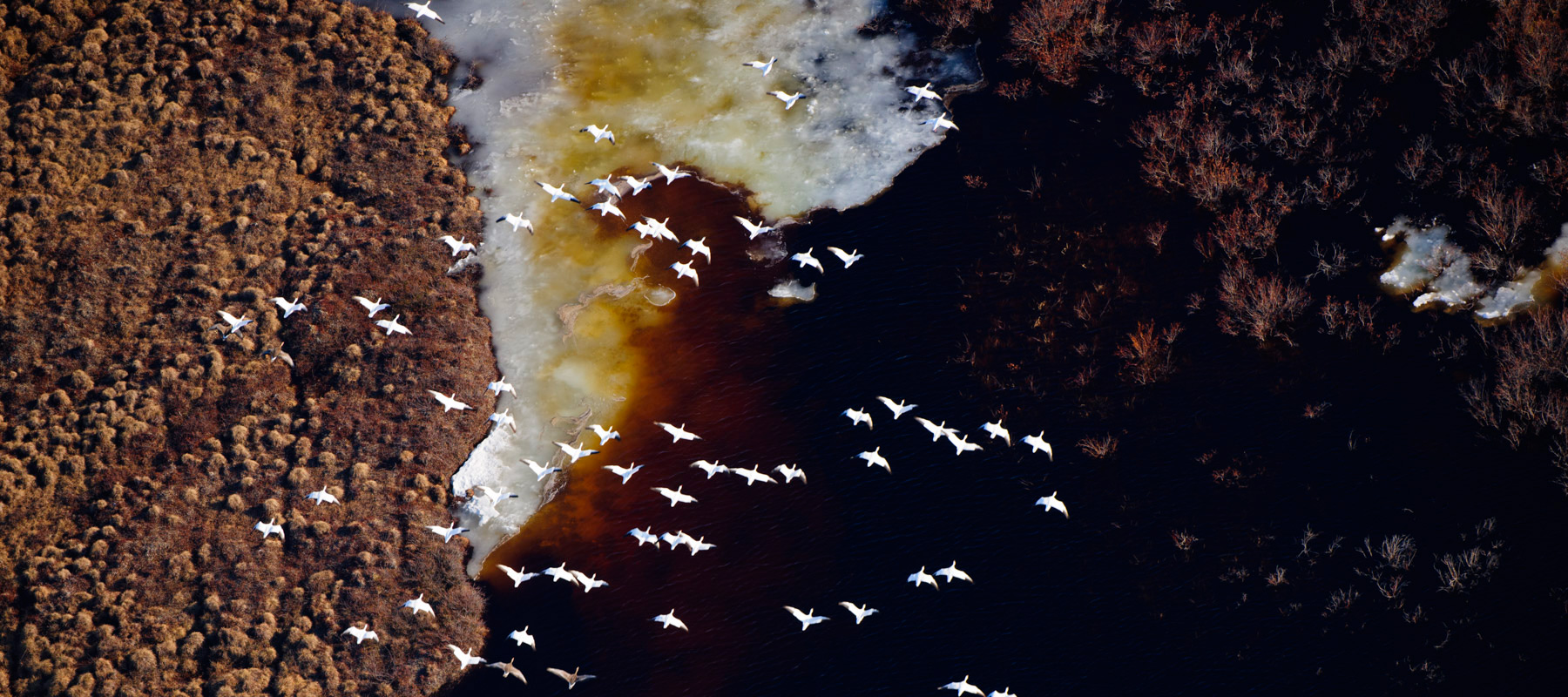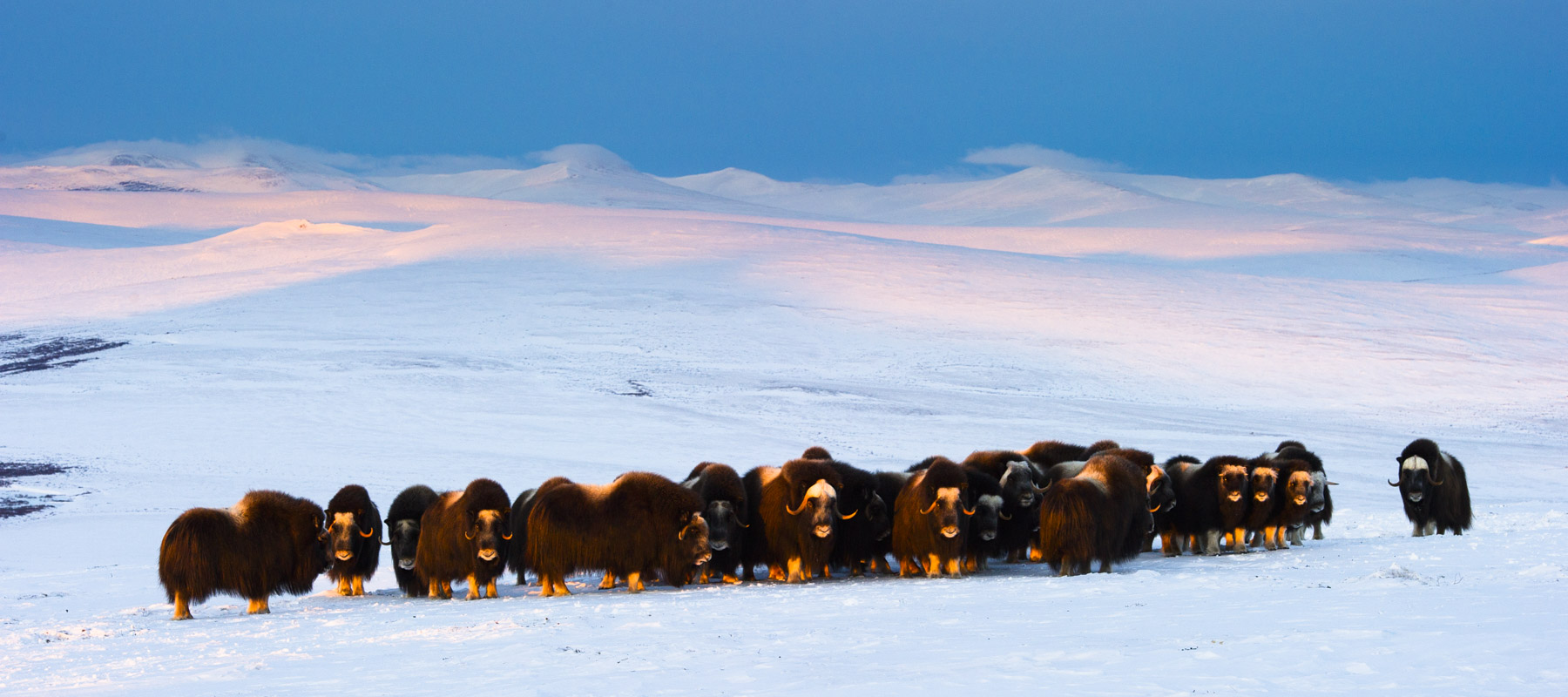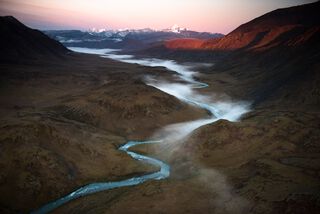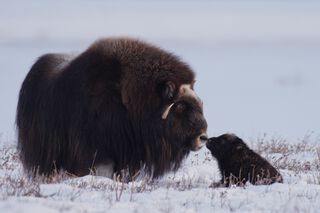"In a Gwich’in creation story, the original people of the Arctic used to be caribou. When they separated, the caribou kept a bit of the human heart and the human kept a bit of the caribou heart. They made an oath that the caribou would always take care of the Gwich’in as long as the Gwich’in would always take care of the caribou."
The Last Great Wilderness
In our modern, hectic world we all seek a place of refuge. In the northeast corner of Alaska, there is such a place – the Last Great Wilderness – otherwise known as the Arctic National Wildlife Refuge. Far away from the busy cities it is like a window that allows us to travel back in time and explore a land largely unaltered by western civilization. For thousands of generations, the Gwich’in people have lived off the Arctic Refuge, what they call “the Sacred Place Where Life Begins.” For hundreds of thousands of caribou, for polar bears, muskox, wolves, arctic foxes and over 200 species of migratory birds it is exactly that, a birthing ground. These Arctic species are dependent on the Arctic Refuge for their survival.
Ever since Florian Schulz has explored the Arctic Refuge for the first time nearly two decades ago he was fascinated with this enormous wilderness. From the Mountains of the Brooks Range you can look in any direction as far as the eye can see without coming across anything man-made. No buildings, power lines or roads disturb this untouched land.
Unfortunately many attempts have been made to turn the coastal plain of the Arctic Refuge into an oilfield. Politicians have called the Refuge a “flat, white nothingness” or “a barren wasteland.” Together with his brother Salomon Schulz, Florian set out on a mission to document the Arctic Refuge in the course of the season to create an authentic documentary about the “Last Great Wilderness” to help with its permanent protection. It was extremely exciting for the Schulz brothers, when President Obama recommended the Refuge coastal plain for wilderness protection, using their film material.
The Threat
While parts of the Arctic National Wildlife Refuge enjoy permanent protection, an area of the Refuge’s coastal plain – the so called “1002 area“ could be opened up for oil drilling. Turning the coastal plain into an oilfield would have devastating effects on the Porcupine caribou herd, polar bears and the myriads of birds and other arctic wildlife. How impactful the development is we see just further west, where the Prudhoe Bay oilfield spans for nearly 60 miles, with oil roads, pipelines and countless industrial facilities.
Legend of the Gwich’in
The Goal
The goal is to create a powerful nature documentary that allows people to make up their own mind about the value and beauty of the Arctic National Wildlife Refuge, and not only rely on the statements of politicians. Producer Florian Schulz wants to capture a current image of the Arctic Refuge and the wildlife species that call it their home. There are very few places in the world left that parallel its wilderness character. Over the recent decades this piece of land in the northeastern most corner of the United States has captured people’s imagination, yet very few people get to experience it in person.
Working together with his brother Salomon Schulz, Florian aims to apply the highest standards of nature filmmaking to bring the Arctic Refuge alive so people can visualize this magical place. The film team is prepared to spend months in the field to create an authentic picture of the Arctic National Wildlife Refuge. The producer wants the audience to be able experience a true sense of place of this arctic wilderness.
Publikations about ANWR
National Geographic published an Instagram guest post by Florian about the current situation of the Arctic National Wildlife Refuge.
President Obama announces that The Department of Interior released a revised Comprehensive Conservation plan to better sustain and manage Alaska's Arctic National Wildlife Refuge. Film footage by Florian Schulz
Article: Liberty, Equality & caribou
Issue: Nov. / Dec. 2010
